Relaxation Exercises After Work: A Comprehensive Guide
Unwind after a long day with our comprehensive guide to relaxation exercises. Discover easy and effective techniques to release tension, reduce stress, and rejuvenate your mind and body. From gentle stretches to mindfulness practices, these exercises will help you recharge and find peace after work.
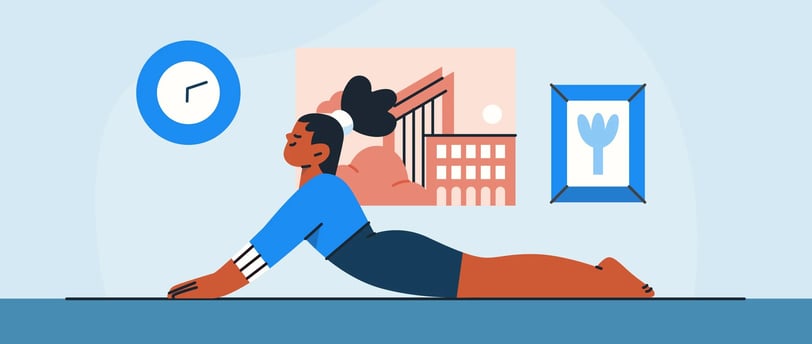

In today's fast-paced work environment, finding effective ways to unwind after a long day is crucial for maintaining both physical and mental well-being. This guide will explore various relaxation techniques and strategies to help you transition from work mode to a state of calm and rejuvenation.
Understanding Work-Related Stress
Before diving into relaxation techniques, it's important to recognize the common causes of workplace stress:
- Tight deadlines
- Heavy workload
- Interpersonal conflicts
These stressors can lead to various physical and mental health issues, including headaches, fatigue, anxiety, and depression.
Top Benefits of Practicing Relaxation After Work
Incorporating relaxation exercises into your post-work routine can yield numerous benefits:
- Improved work-life balance
- Better separation between work and personal life
- Increased job satisfaction
- Enhanced mental and physical well-being
- Reduced stress levels
- Improved sleep quality
Quick Relaxation Techniques for Busy Professionals
Deep Breathing Exercises
Deep breathing exercises are relaxation techniques that involve controlled, intentional breathing patterns to reduce stress, promote calmness, and improve overall well-being. These exercises typically focus on slow, deep inhalations and exhalations, often incorporating specific timing or counting methods.
4-7-8 breathing technique:
The 4-7-8 breathing technique is a relaxation method that involves inhaling for 4 seconds, holding the breath for 7 seconds, and exhaling for 8 seconds. This controlled breathing exercise is designed to reduce stress and promote calmness.
Find a comfortable sitting position with your back straight.
Place the tip of your tongue against the ridge behind your upper front teeth. Keep it there throughout the exercise.
Exhale completely through your mouth, making a whoosh sound.
Close your mouth and inhale quietly through your nose for a count of 4.
Hold your breath for a count of 7.
Exhale completely through your mouth, making a whoosh sound, for a count of 8.
Repeat this cycle for a total of four breaths.
Practice this technique twice a day, or whenever you feel stressed.Note: If holding your breath for 7 seconds is difficult at first, you can start with shorter counts and gradually work up to the 4-7-8 ratio.
Box breathing method:
Box breathing is a relaxation technique where you breathe in, hold your breath, exhale, and pause for equal counts, typically 4 seconds each, forming a square pattern. This method helps reduce stress and promote calmness.
Box breathing, also known as square breathing, is a simple yet effective relaxation technique. Here's a detailed guide on how to perform it:
Find a comfortable seated position with your back straight.
Close your eyes if you feel comfortable doing so.
Inhale slowly through your nose for a count of 4 seconds. Feel your lungs expand.
Hold your breath for 4 seconds. Try to maintain a relaxed posture.
Exhale slowly through your mouth for 4 seconds, completely emptying your lungs.
Hold your breath again for 4 seconds before starting the next cycle.
Repeat this process for 4-5 minutes or until you feel calmer.
Tips for practice:
Visualize a square while breathing, moving along each side as you inhale, hold, exhale, and hold again.
Start with shorter counts (e.g., 3 seconds) if 4 seconds feels too long, and gradually increase.
Practice 2-3 times daily for best results, especially before bed or during stressful moments.
Combine with other relaxation techniques like progressive muscle relaxation for enhanced effects.
Progressive Muscle Relaxation
Progressive Muscle Relaxation (PMR) is a technique that involves systematically tensing and relaxing different muscle groups to release tension and promote relaxation. Here's a detailed guide on how to perform this technique:
Find a quiet, comfortable place to sit or lie down.
Take a few deep breaths to begin relaxing.
Start with your feet:
Curl your toes and tense the muscles in your feet.
Hold this tension for about 5 seconds.
Release the tension and relax your feet completely.
Notice the difference between the tensed and relaxed state.
Move up to your calves:
Tighten the muscles in your calves.
Hold for 5 seconds, then release.
Feel the relaxation spreading through your calves.
Continue this process, moving up your body:
Thighs
Buttocks
Abdomen
Chest
Back
Arms and hands
Shoulders
Neck
Face (including jaw, eyes, and forehead)
For each muscle group:
Tense the muscles for 5 seconds
Release the tension and relax for 10-15 seconds
Notice the contrast between tension and relaxation
After completing all muscle groups, take a few moments to enjoy the state of relaxation.
Slowly open your eyes and return to your surroundings.
Basic Mindfulness Exercises
Mindful Breathing
- Find a comfortable seated position
- Close your eyes and focus on your breath
- Notice the sensation of air moving in and out of your nostrils
- If your mind wanders, gently bring your attention back to your breath
- Practice for 5-10 minutes daily
Body Scan
- Lie down or sit comfortably
- Start at your toes and slowly move your attention up through your body
- Notice any sensations, tension, or discomfort in each area
- Practice releasing tension as you move through each body part
- Spend about 10-15 minutes on a full body scan
Mindful Observation
- Choose an object in your environment (e.g., a plant, artwork)
- Focus all your attention on this object for 5 minutes
- Observe its colors, textures, shapes, and any patterns
- If your mind wanders, gently redirect your focus back to the object
Using Guided Meditation Resources
Mobile Apps
- Download meditation apps like Headspace, Calm, or Insight Timer
- Choose guided meditations based on your needs (e.g., stress relief, sleep)
- Start with short sessions (5-10 minutes) and gradually increase duration
- Use headphones for a more immersive experience
YouTube Guided Meditations
- Search for guided meditations on YouTube
- Look for reputable channels with positive reviews
- Experiment with different narrators and styles to find what works best for you
- Create a playlist of your favorite guided meditations for easy access
Podcasts
- Subscribe to meditation podcasts like "Tara Brach," "10% Happier," or "Meditation Minis"
- Download episodes for offline listening during commutes or breaks
- Try different podcast styles and lengths to suit your schedule
Remember to practice consistently and be patient with yourself as you develop your mindfulness skills. Over time, these exercises will become more natural and effective in calming your mind after work.
Physical Exercises for Stress Relief
Physical exercises for stress relief are specific bodily movements or activities designed to reduce tension, promote relaxation, and alleviate stress. These can include yoga poses, stretching routines, and other forms of gentle physical activity that help release muscle tension and promote mental calmness.
Yoga Poses for Relaxation
Yoga poses for relaxation are specific body postures in yoga practice designed to reduce stress, promote calmness, and ease tension in the body and mind. These poses typically involve gentle stretching and controlled breathing to induce a state of physical and mental relaxation.
Child's pose
Here's a detailed guide on how to perform the Child's Pose (Balasana) yoga technique:
Start by kneeling on the floor with your knees hip-width apart and your feet together behind you.
Sit back on your heels, keeping your big toes touching.
Exhale and lay your torso between your thighs.
Extend your arms in front of you, palms facing down, and lengthen your neck and spine.
Rest your forehead on the floor if possible. If not, you can rest it on a cushion or folded blanket.
Breathe deeply and slowly, feeling your breath move through your body.
With each inhale, feel your spine lengthen slightly.
With each exhale, allow your body to relax deeper into the pose.
Hold this position for 1-3 minutes, or longer if comfortable.
To release, use your hands to gently walk your torso upright and sit back on your heels.
Benefits of Child's Pose:
Helps release tension in the back, shoulders, and chest
Promotes relaxation and helps calm the mind
Gently stretches the hips, thighs, and ankles
Can help relieve back and neck pain when practiced regularly
Remember to listen to your body and modify the pose as needed. If you have any knee injuries or discomfort, you can place a cushion between your thighs and calves for support.
Legs-up-the-wall pose
Here's a detailed guide on how to perform the Legs-up-the-wall pose (Viparita Karani):
Find a clear wall space and place a yoga mat or folded blanket parallel to the wall.
Sit sideways as close to the wall as possible, with your hip touching the wall.
Slowly lie back while swinging your legs up the wall. Your bottom should be close to or touching the wall.
Adjust your position so that your sitting bones are slightly away from the wall and your legs are fully extended up the wall.
Rest your arms by your sides, palms facing up, or place them on your belly.
Close your eyes and focus on your breath, taking slow, deep inhalations and exhalations.
Relax your entire body, especially your legs, allowing them to be supported by the wall.
Stay in this position for 5-15 minutes, or longer if comfortable.
To come out of the pose, slowly bend your knees and roll to one side. Rest in a fetal position for a few breaths before gently pushing yourself up to a seated position.
Benefits of Legs-up-the-wall pose:
Reduces swelling and fatigue in the legs and feet
Calms the nervous system and relieves mild anxiety
Helps alleviate lower back pain
Improves circulation
Note: If you have glaucoma, hypertension, or any serious neck or back injuries, consult with a healthcare professional before practicing this pose.
Stretching Routines
Stretching routines are a series of planned, systematic movements designed to elongate muscles and improve flexibility. These exercises typically target specific muscle groups and are performed regularly to enhance physical well-being and reduce tension.
Neck and shoulder stretches
Here's a detailed guide on how to perform neck and shoulder stretches:
1. Neck Rolls:
Sit or stand with your back straight and shoulders relaxed.
Slowly lower your chin to your chest.
Gently roll your head to the right, bringing your right ear towards your right shoulder.
Continue rolling your head back, then to the left, and finally returning to the starting position.
Repeat this circular motion 5-10 times, then reverse the direction.
2. Shoulder Shrugs:
Stand or sit with your arms at your sides.
Slowly raise your shoulders towards your ears.
Hold for 3-5 seconds, feeling the tension in your shoulders and neck.
Slowly lower your shoulders back down.
Repeat this motion 10-15 times.
3. Shoulder Blade Squeeze:
Sit or stand with your arms at your sides.
Squeeze your shoulder blades together, as if trying to hold a pencil between them.
Hold for 5-10 seconds, then release.
Repeat this exercise 10-15 times.
4. Upper Trapezius Stretch:
Sit or stand with your back straight.
Gently tilt your head to the right, bringing your right ear towards your right shoulder.
To deepen the stretch, place your right hand on the left side of your head and apply gentle pressure.
Hold for 15-30 seconds, feeling the stretch along the left side of your neck.
Slowly return to the starting position and repeat on the other side.
5. Chest and Shoulder Stretch:
Stand in a doorway or near a wall.
Raise your arms to shoulder height and bend your elbows at 90-degree angles, palms facing forward.
Place your forearms on either side of the doorframe or against the wall.
Slowly lean forward, feeling the stretch across your chest and the front of your shoulders.
Hold for 15-30 seconds, then release.
Remember to perform these stretches gently and stop if you feel any pain. It's best to do these exercises regularly, ideally daily, to maintain flexibility and reduce tension in your neck and shoulders.
Lower back stretches
Here's a detailed guide on how to perform lower back stretches:
1. Cat-Cow Stretch
Start on your hands and knees with your wrists directly under your shoulders and knees under your hips.
As you inhale, arch your back, lifting your chest and tailbone towards the ceiling (Cow pose).
As you exhale, round your spine towards the ceiling, tucking your chin to your chest (Cat pose).
Repeat this flow 5-10 times, moving with your breath.
2. Child's Pose
Kneel on the floor with your toes together and knees hip-width apart.
Sit back on your heels and stretch your arms forward on the floor.
Lower your chest towards the floor, resting your forehead on the ground if possible.
Hold for 30 seconds to 1 minute, breathing deeply.
3. Knee-to-Chest Stretch
Lie on your back with your knees bent and feet flat on the floor.
Bring one knee to your chest, holding it with both hands.
Keep the other foot flat on the floor.
Hold for 30 seconds, then switch legs.
Repeat 2-3 times for each leg.
4. Seated Forward Bend
Sit on the floor with your legs extended in front of you.
Keeping your back straight, slowly bend forward from your hips.
Reach for your toes, or as far as comfortable.
Hold for 30 seconds to 1 minute, breathing deeply.
5. Supine Twist
Lie on your back with your knees bent and feet flat on the floor.
Extend your arms out to the sides in a T-shape.
Lower both knees to one side while keeping your shoulders flat on the floor.
Turn your head in the opposite direction of your knees.
Hold for 30 seconds, then switch sides.
Remember to perform these stretches gently and stop if you feel any pain. It's best to do these exercises regularly, ideally daily, to maintain flexibility and reduce tension in your lower back. If you have any existing back conditions, consult with a healthcare professional before starting a new stretching routine.
Creating a Relaxation Routine
Creating a Relaxation Routine refers to the process of establishing a consistent set of practices and activities designed to help an individual transition from work mode to a state of relaxation. This routine typically includes specific techniques and environmental adjustments to promote stress relief and mental calmness after work hours.
Transition from Work Mode to Relaxation
Establish a post-work ritual
Here's a detailed guide on how to establish a post-work ritual:
Set a specific end time for work
Choose a consistent time to finish work each day
Set an alarm or reminder to signal the end of your workday
Create a transition activity
Change your clothes to signify the shift from work to personal time
Take a short walk or do light exercise to physically separate work and relaxation
Practice a brief meditation or deep breathing exercise
Tidy up your workspace
Clear your desk or work area
Put away work-related items
Make a to-do list for the next day to avoid work thoughts lingering
Engage in a relaxing activity
Listen to calming music or a podcast
Read a few pages of a book
Engage in a hobby or creative pursuit
Create a sensory transition
Light a scented candle or use essential oils
Adjust lighting to create a more relaxed atmosphere
Prepare a soothing beverage like herbal tea
Implement a digital detox
Turn off work-related notifications
Avoid checking work emails or messages
Set boundaries for technology use in the evening
Remember, consistency is key when establishing a post-work ritual. Try to perform these activities in the same order each day to create a routine that signals to your mind and body that it's time to relax and unwind from work.
Implement effective time management strategies
Here's a detailed guide on how to implement effective time management strategies:
Prioritize tasks
Create a to-do list at the start of each day or week
Use the Eisenhower Matrix to categorize tasks by urgency and importance
Focus on high-priority tasks first
Use time-blocking technique
Allocate specific time slots for different tasks or types of work
Schedule breaks between blocks to avoid burnout
Stick to your schedule as much as possible
Minimize distractions
Turn off notifications on your devices during focused work periods
Use website blockers to limit access to time-wasting sites
Create a quiet, organized workspace
Utilize the Pomodoro Technique
Work in 25-minute focused sessions (pomodoros)
Take a 5-minute break after each pomodoro
After four pomodoros, take a longer 15-30 minute break
Learn to delegate and say no
Identify tasks that can be delegated to others
Politely decline non-essential commitments that don't align with your goals
Use productivity tools and apps
Employ project management tools like Trello or Asana
Use time-tracking apps to monitor how you spend your time
Utilize calendar apps for scheduling and reminders
Practice the two-minute rule
If a task takes less than two minutes to complete, do it immediately
This helps prevent small tasks from piling up
Review and adjust regularly
Assess your time management strategies weekly or monthly
Identify areas for improvement and make necessary adjustments
Celebrate successes to stay motivated
Remember, effective time management is a skill that requires practice. Be patient with yourself as you implement these strategies and find what works best for you.
Set Up a Relaxation Space at Home
Set Up a Relaxation Space at Home refers to the process of creating a dedicated area within one's residence specifically designed for relaxation and stress relief. This involves designating a specific location and incorporating elements that promote calmness and tranquility.
Designate a specific area for relaxation
Here's a detailed guide on how to designate a specific area for relaxation:
Choose the right location
Select a quiet area in your home, away from high-traffic zones
Consider factors like natural light, ventilation, and privacy
Ensure the space is large enough for your relaxation activities (e.g., yoga, meditation)
Clear the space
Remove any work-related items or clutter
Keep only essential items that contribute to relaxation
Add comfortable seating
Include a comfortable chair, cushions, or a yoga mat
Consider a small table for items like books or tea
Incorporate calming colors
Use soft, muted colors like blues, greens, or pastels
Consider repainting the area or adding color through accessories
Adjust lighting
Use soft, warm lighting instead of harsh overhead lights
Consider adding dimmer switches or lamps with adjustable brightness
Introduce natural elements
Add plants for a touch of nature and improved air quality
Consider a small indoor fountain for soothing water sounds
Create a sensory experience
Use scented candles or essential oils for aromatherapy
Add soft textures through blankets or pillows
Minimize noise
Use soundproofing materials if necessary
Consider a white noise machine or calming music player
Personalize the space
Add personal touches like artwork or meaningful objects
Keep a journal or relaxation-focused books nearby
Establish boundaries
Set rules for the use of this space (e.g., no work-related activities)
Communicate the purpose of this area to family members or roommates
Remember, the key is to create a space that feels calming and separate from your work environment. Regularly maintain and adjust the area to ensure it continues to meet your relaxation needs.
Include essential elements for a calming environment
Here's a detailed guide on how to include essential elements for a calming environment:
Incorporate natural elements
Add indoor plants like peace lilies, snake plants, or lavender for air purification and calming scents
Use natural materials such as wood, stone, or bamboo in furniture and decorations
Display nature-inspired artwork or photographs
Optimize lighting
Install dimmer switches to control light intensity
Use warm, soft lighting instead of harsh fluorescent lights
Place salt lamps or Himalayan salt candle holders for a soothing glow
Create a soothing color palette
Paint walls in calming colors like soft blues, greens, or neutral tones
Use color psychology: blue for calmness, green for balance, lavender for relaxation
Incorporate these colors in furnishings, curtains, and accessories
Introduce calming sounds
Use a white noise machine or app for ambient background noise
Install a small indoor fountain for soothing water sounds
Hang wind chimes near a window for gentle, natural melodies
Declutter and organize
Remove unnecessary items to create a sense of space and order
Use storage solutions to keep essentials out of sight
Maintain a minimalist approach to decor
Add comfortable seating
Choose a plush armchair or a cozy reading nook
Use soft throw pillows and blankets for added comfort
Consider a meditation cushion or yoga mat for floor seating
Incorporate aromatherapy
Use an essential oil diffuser with calming scents like lavender, chamomile, or vanilla
Place scented candles strategically around the room
Use natural room sprays with relaxing fragrances
Create a technology-free zone
Designate the area as a no-phone or no-screen space
Remove or hide electronic devices that may cause distraction
Use this space for unplugged activities like reading or meditation
Remember, the key is to engage all your senses in creating a calming environment. Experiment with different elements to find what works best for you, and regularly maintain the space to ensure it remains a peaceful retreat.
Incorporating Relaxation into Daily Life
Incorporating Relaxation into Daily Life refers to the process of integrating stress-relief practices and relaxation techniques into one's regular routine, making them a consistent part of everyday activities. This approach aims to manage stress and promote well-being on an ongoing basis, rather than treating relaxation as an isolated or occasional practice.
5-Minute Relaxation Techniques for the Office
Desk stretches
Here's a detailed guide on how to perform desk stretches:
Neck Rolls
Sit up straight in your chair
Drop your chin to your chest
Slowly roll your head to the right, then back, left, and forward
Repeat 5 times, then reverse direction
Shoulder Shrugs
Raise both shoulders towards your ears
Hold for 5 seconds, then release
Repeat 10 times
Wrist and Finger Stretch
Extend one arm in front of you, palm down
Use your other hand to gently pull the fingers back towards your body
Hold for 10 seconds, then switch hands
Seated Spinal Twist
Sit sideways in your chair
Twist your upper body towards the back of the chair
Hold for 10 seconds, then switch sides
Leg Extensions
While seated, straighten one leg in front of you
Flex your foot, pointing toes towards the ceiling
Hold for 10 seconds, then switch legs
Perform these stretches every 1-2 hours throughout your workday to reduce tension and improve circulation.
Quick meditation breaks
Here's a detailed guide on how to implement quick meditation breaks:
Find a quiet spot
Choose a relatively quiet area in your office
If possible, use noise-cancelling headphones
Set a timer
Use your phone or a meditation app to set a timer for 2-5 minutes
This helps you relax without worrying about time
Sit comfortably
Sit in a chair with your feet flat on the ground
Keep your back straight but not tense
Focus on your breath
Close your eyes and take a deep breath in through your nose
Exhale slowly through your mouth
Continue breathing naturally, focusing on the sensation of each breath
Use a mantra (optional)
Choose a simple word or phrase like "calm" or "peace"
Repeat it silently with each breath
Handle distractions
If your mind wanders, gently bring your focus back to your breath
Don't judge yourself for getting distracted; it's normal
End the session
When your timer goes off, take a final deep breath
Slowly open your eyes and take a moment to notice how you feel
Practice this quick meditation technique 1-3 times throughout your workday for improved focus and stress relief.
Relaxation Exercises During Commute
Relaxation Exercises During Commute refers to techniques and practices designed to reduce stress and promote relaxation while traveling to and from work. These exercises can include mindfulness practices and audio-guided relaxation methods that can be safely performed during one's daily commute.
Practice mindful commuting
Here's a detailed guide on how to practice mindful commuting:
Start with intention
Before leaving, take a deep breath and set an intention for a calm, mindful commute
Remind yourself that the commute is an opportunity for relaxation, not a waste of time
Focus on your breath
Take slow, deep breaths, inhaling for a count of 4 and exhaling for a count of 6
Pay attention to the sensation of air entering and leaving your body
Engage your senses
Notice the sights, sounds, and smells around you without judgment
If driving, focus on the feeling of your hands on the steering wheel or your feet on the pedals
Practice gratitude
Think of three things you're grateful for during your commute
This could be as simple as a comfortable seat or good weather
Use mindful waiting
If stuck in traffic or waiting for public transport, use this time for a mini-meditation
Focus on your breath or do a body scan, noticing any areas of tension
Let go of stress
Imagine your work stress staying at the office as you leave
Visualize yourself arriving home calm and refreshed
Use positive affirmations
Repeat calming phrases like "I am relaxed" or "I release tension with each breath"
Use these to counter any negative thoughts about the commute
Practice non-judgment
Observe your thoughts about other commuters or traffic without labeling them as good or bad
Let thoughts come and go without getting caught up in them
Remember, mindful commuting is a skill that improves with practice. Start with just a few minutes and gradually increase the duration as you become more comfortable with the technique.
Use audio-guided relaxation techniques
Here's a detailed guide on how to use audio-guided relaxation techniques:
Choose an audio guide
Select a relaxation audio that suits your preferences (e.g., nature sounds, guided meditation, or soft music)
Look for reputable apps or websites offering guided relaxation sessions
Find a comfortable space
If possible, find a quiet area where you won't be disturbed
Use headphones for better sound quality and to block out external noise
Set up your device
Ensure your phone or audio player is fully charged
Download the audio guide if necessary to avoid streaming issues
Prepare yourself
Sit or lie down in a comfortable position
Close your eyes if it feels comfortable
Start the audio guide
Begin the relaxation session, following the instructions in the audio
Focus on the voice or sounds, letting them guide your relaxation
Breathe deeply
Pay attention to your breathing, following any breathing instructions given
If no specific instructions are given, try to breathe slowly and deeply
Visualize
If the guide includes visualization exercises, try to create mental images as instructed
Engage your senses in the visualization to make it more vivid
Stay present
If your mind wanders, gently bring your attention back to the audio guide
Don't worry about doing it "perfectly" - relaxation is a practice
Complete the session
Follow the guide to the end of the session
Take a moment to notice how you feel after the relaxation exercise
Integrate into your routine
Try to use audio-guided relaxation regularly, such as during your commute or before bed
Experiment with different types of audio guides to find what works best for you
Remember, the key is consistency. Regular practice will help you get the most benefit from audio-guided relaxation techniques.
Long-term Strategies for Stress Management
Develop Healthy Habits
Maintain a regular exercise routine
Follow a balanced diet and stay hydrated
Seek Professional Help When Needed
Recognize signs that indicate the need for professional support
Explore different types of professional help available
FAQs: Relaxation Exercises After Work
Q1: How long should I spend on relaxation exercises after work?
A1: The duration can vary based on your schedule and needs. Even 5-10 minutes of focused relaxation can be beneficial. Start with short sessions and gradually increase the time as you develop a routine.
Q2: Can I do relaxation exercises at my desk?
A2: Yes, many relaxation techniques can be adapted for office use. Deep breathing, desk stretches, and quick meditation breaks are excellent options for in-office relaxation.
Q3: How can I create a relaxing environment at home?
A3: Designate a specific area for relaxation, free from work-related items. Include elements like comfortable seating, soft lighting, and calming scents. Keep the space clutter-free and use it exclusively for relaxation activities.
Q4: What if I don't have time for relaxation exercises?
A4: Incorporate relaxation into your daily activities. Practice mindful commuting, use audio-guided relaxation during your commute, or try quick breathing exercises during short breaks.
Q5: How do I know if I need professional help for stress management?
A5: If you experience persistent physical symptoms, ongoing anxiety or depression, or if stress significantly impacts your daily life and relationships, it may be time to seek professional help. A mental health professional can provide personalized strategies and support.
By implementing these relaxation exercises and strategies, you can effectively manage work-related stress and improve your overall well-being. Remember, consistency is key – make relaxation a regular part of your post-work routine for the best results.




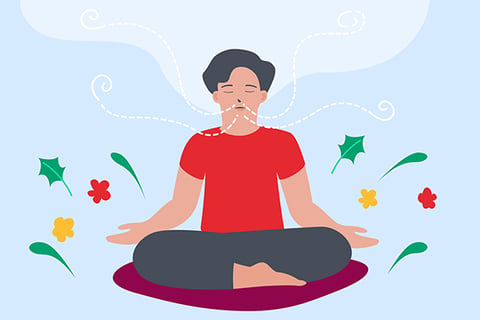


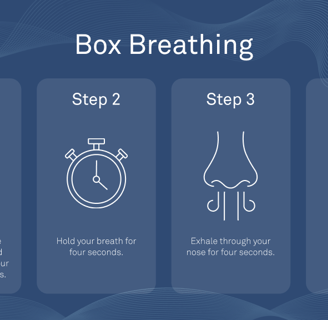
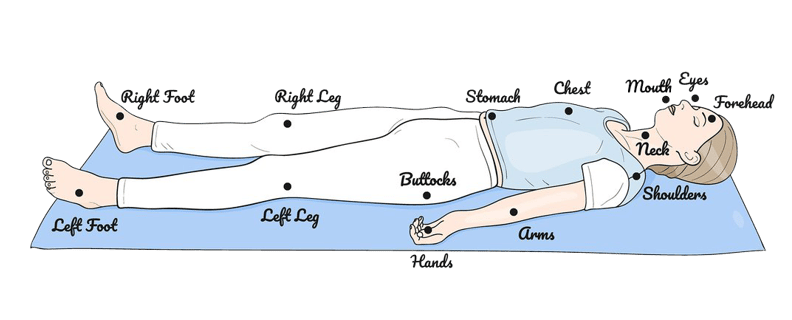

Practice this technique regularly, ideally once or twice a day, to maximize its benefits. With practice, you'll become more aware of muscle tension in your body and be able to relax more easily.
Mindfulness Meditation
Here's a detailed guide on how to practice basic mindfulness exercises and use guided meditation resources to calm your mind:
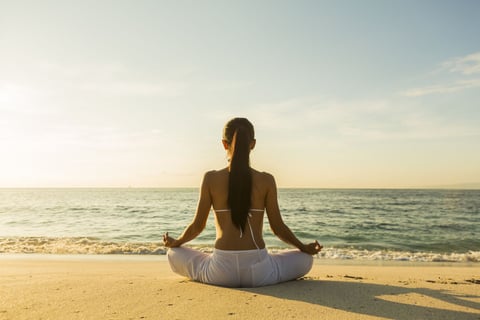

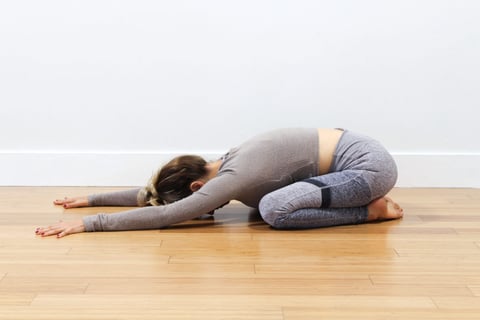

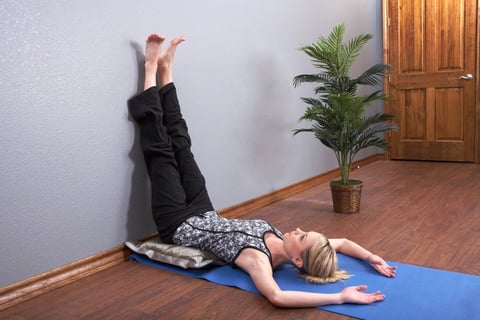







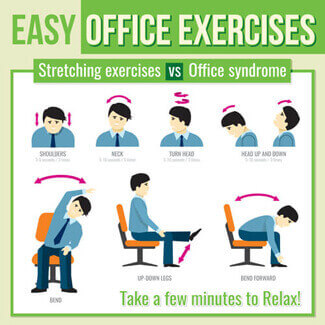

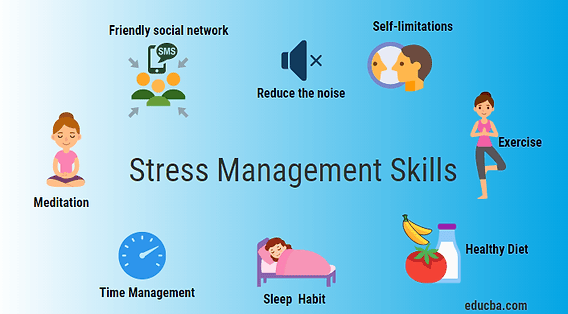

Discover tips for sleep, detox, and mindfulness.
© 2024. All rights reserved.
